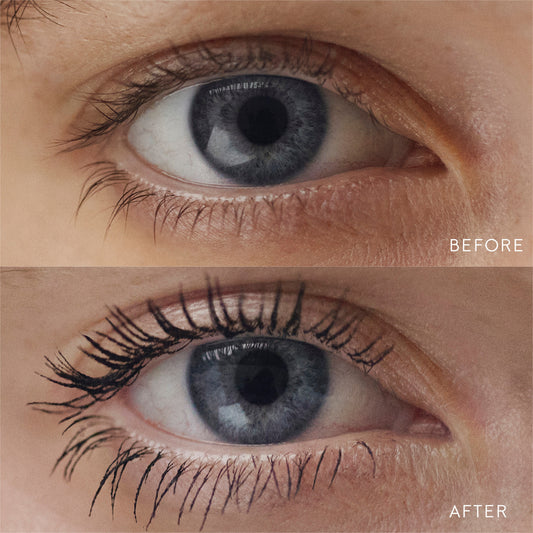What constitutes beauty? Conceptually, it’s a question that philosophy has tried to pinpoint for eons, but what of the physical element of beauty—the products we create and use for beautification? Kjaer Weis’s latest Nude lipsticks utilize natural elements sourced from organic farms all over the world to create a nourishing and moisturizing lipstick. But what do these elements look like in their raw forms? To illustrate, in an homage to Irving Penn’s still life photographs, which took everyday objects, foods, or cigarettes and stacked them artfully to examine on a macro scale, blocks of the ingredients that formulate this lipstick are placed together and photographed.

Slabs of differing waxes stacked like Brutalist monuments offer a glimpse of these materials we regularly come into contact with but likely don’t recognize in their natural state. There’s an elemental beauty in seeing them untamed: the beeswax, usually pale and translucent, here is shown in its unrefined and most natural form, a deep mustard yellow.
Where most beeswax is done in a factory farm style, this wax is collected at a farm in Northern Italy where only a percentage of the honey and wax is culled, the rest left for the bees. In the summertime, basins of water are left with wine corks floating as landing pads for the bees to sit and drink from without risk of drowning. It’s an appreciation of and a reverence for nature, creating a symbiotic relationship between bee and farmer, which in turn produces a better, richer, more potent wax. Rather than pillagers, the farmers are more akin to guardians.
The art is in the ingredients, yes, but also how they’re stacked together.

“We work with a manufacturer in Italy, and the gentleman who is the chemist—the one doing the formulation—he’s really an alchemist. He’s somebody who genuinely has an affinity and understanding for nature and what it provides. And in that, there lies a humanity, and it translates into the suppliers around the world that provide the best raw materials,” says founder Kirsten Kjaer Weis. “We source raw materials from South America, from Israel, and from Italy, where there are organic farmers that provide the highest quality.”
There’s a mystical element, too; the root Dioscorea Batatas, a type of yam, is farmed biodynamically, a process invented by Rudolf Steiner wherein the planting and harvesting of crops is done in tandem with the moon cycles. There’s an art to its cultivation, going back to ancient China; sometimes referred to as the “Light Root”, it also has illuminating and healing properties, the essence of which is infused into the lipstick’s formulation. There’s also shea butter and olive oil, carnauba wax and coconut alkanes, rosehip seed oil and castor oil: a mixture of butters, waxes and oils to produce something soft and creamy.
“If we took out the color, if we just put that aside in the formulation, then the ingredient profile of the lipstick would be the same as what I would create in a skincare product.”
- KIRSTEN KJAER WEIS
“If we took out the color, if we just put that aside in the formulation, then the ingredient profile of the lipstick would be the same as what I would create in a skincare product,” says Kjaer Weis. And the emphasis on using organic ingredients creates both a better texture, but also something more sustainable and kind to the environment. “It’s like the difference in tasting a beautiful tomato from an organic farm in Italy, versus one that you picked from a greenhouse. The quality is just different,” she says. “Having a great chef in the kitchen, which is what I consider the Italian manufacturer, is everything.”

Because of the prevalence of chemicals and synthetics in cosmetics, it can be difficult to recreate the same type of texture and feel in an organic formulation. But through the master formulator’s extensive experimentations with natural emollients and moisturizers, Kjaer Weis was able to create a lipstick with the same feel and glide as a conventional one.
“Women have gotten so used to silicones in everything, so when you don’t have it, you have to find a way of creating that perfect slip,” says Kjaer Weis. The coconut alkanes, which is a mixture of fatty acids derived from coconut oil, functions as a natural silicone to override this common issue in natural and organic beauty. The carnauba wax and rosehip oil both add to the texture to create a lipstick most akin to what we’re used to in other products—not too dry, not too oily—but with the added benefit of being moisturizing and healing without sacrificing on the color payoff.
The art is in the ingredients, yes, but also how they’re stacked together; the endless permutations tested to arrive at the final, most artful form, how they synthesize into a lipstick, from the work of the bees in Italy to the farms in South America, they transform into something truly beautiful.
Attribution:
Words by Christina Cacouris
Photos by Paul Westlake
Styling by Sara Wacksman










